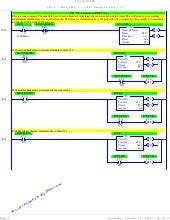

The style displayed on the faceplate for this parameter, if it is set to Visible, or the style displayed in the Tag Editor or Data Monitor. This defines the default values that initially come from the data type.ĭefault values are not applicable to InOut parameters or their members because InOuts are passed by reference. The default value that is set when an Add-On Instruction of this type is instantiated. InOut parameters are always passed by reference.ĭata Type is not available for members of the InOut parameters and the alias parameters. InOut parameters are atomic or complex data types (that is, structures or arrays). During an Add-On Instruction call, Input and Output parameters are passed by value. Input and Output parameters are atomic data types only. Alias For is not available for InOut parameters. You can have only one input and one output alias per local tag. Local tags and InOut tags cannot alias another tag. The local tag or its member for which you want the parameter to be an alias.įor the Add-On Instruction definition, only Input and Output tags can alias local tags. Usage is not available for members of the InOut parameters. Right-click the Usage heading to select Auto Layout. InOut parameters are always passed by reference.Use Auto Layout to order the layout of the parameters so that Input parameters appear first, followed by Output parameters, and then by the InOut parameters.

The following table describes the settings on the Add-On Instruction Definition Editor dialog box – Parameters tab. Add-On Instruction Definition Editor dialog box – Parameters tab settings Once defined in a project, they behave similarly to the controller's built-in instructions.

Add-On Instructions are instructions that you define and add to your project. Use the Parameters tab on the Add-on Instruction Editor dialog box to define and configure the parameters of an Add-On Instruction. The Add-On Instruction Definition dialog box opens.

There are three types of PLC timers: The Timer ON delay (TON), Timer Off delay (TOF), and the Retentive Timer On delay (RTO). PLC Timer Off Delay (TOF) Types of Timers in PLC | OFF Delay Timer (TOF) PLC Timers are generally used for delaying an event from taking place, or to delay a device from shutting off either on an on transition or an off transition.For Timers, the Enable bit follows the rung condition. By default, timers are stored in the T4 Data file, however other time files can be created.PLC Timers are generally used for delaying an event from taking place, or to delay a device from shutting off either on an on transition or an off transition.Types of Timers in PLC | OFF Delay Timer (TOF).


 0 kommentar(er)
0 kommentar(er)
